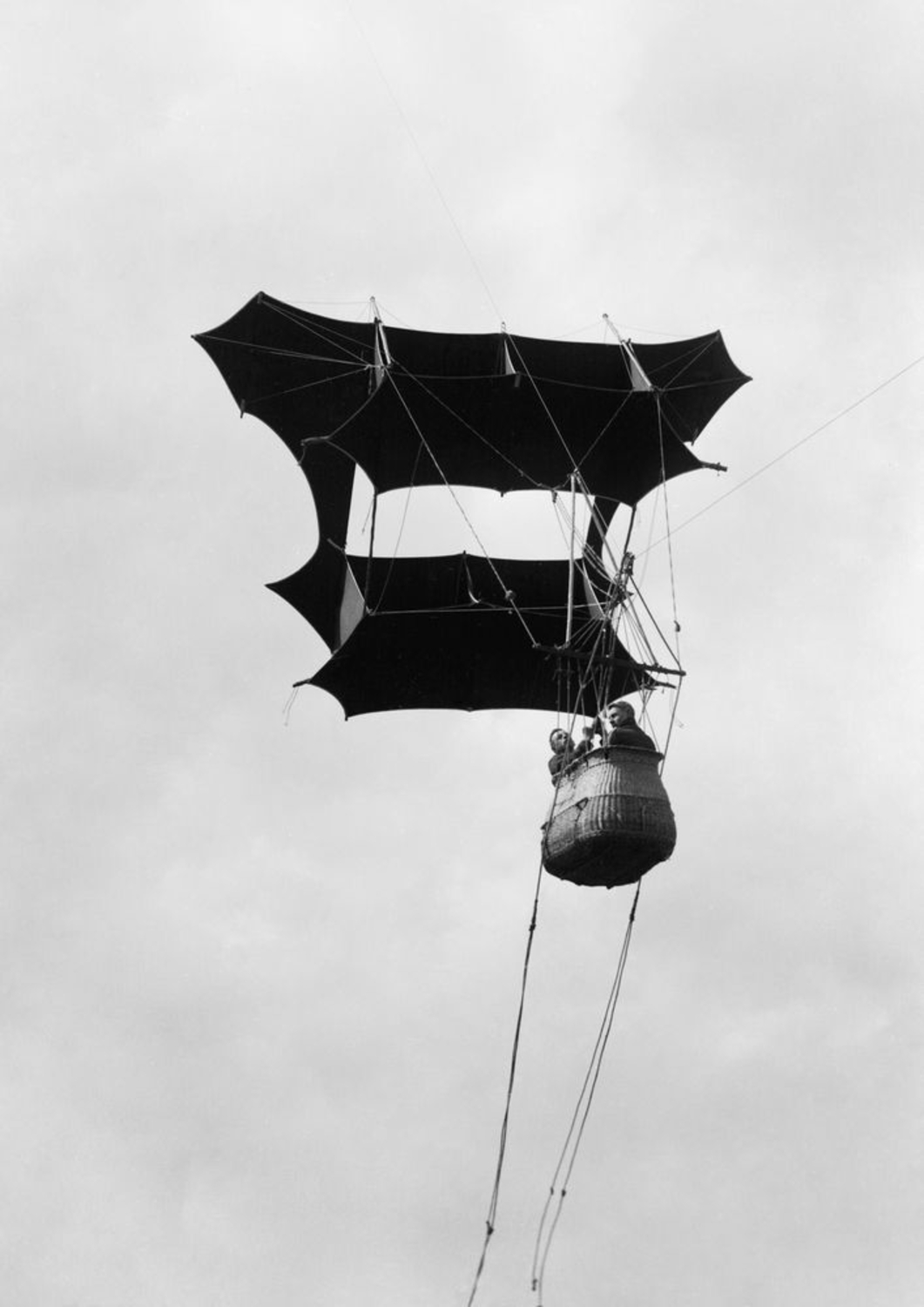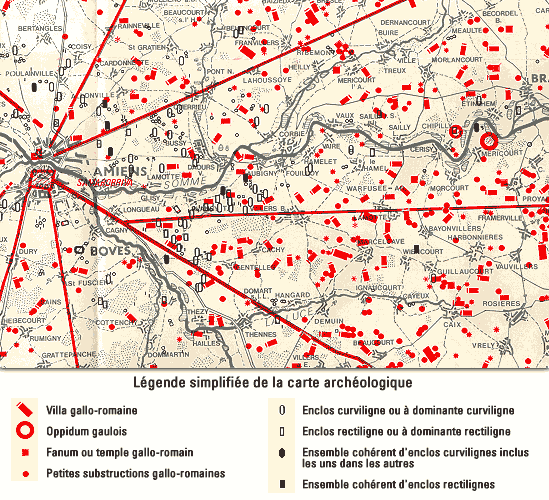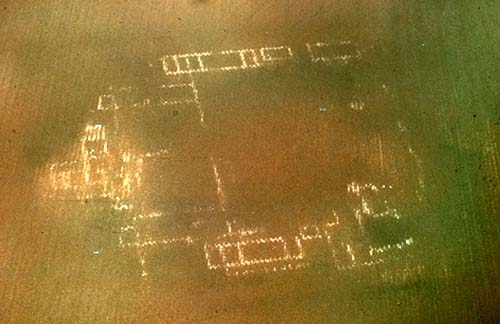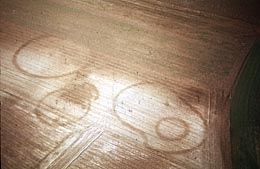- Home
- What is aerial archaeology ?
- Aerial archaeology and maps
Taken from the archaeological map in La Somme pré-romaine et romaine, based on the aerial prospecting of Roger Agache, drawn by B. Bréart.
Recently, Christian Goudineau, a professor at the Collège de France, spoke about the "astonishing contribution" of aerial archaeology. Unquestionably, the results of low-altitude aerial prospecting have been spectacular, particularly in the great plains of northern France where agriculture was thought to have destroyed every trace centuries ago. Nevertheless, we must keep in mind that results from photographic interpretation are necessarily unpredictable and incomplete. They are dependent on methods of growing, the type of plant cover and soil, and atmospheric and hygrometric conditions, all of which play crucial roles in the fleeting appearance of buried remains. Thus, on silty soil, lines of foundations are most easily seen, while systems of filled-in pits are easiest to spot on chalky ground. Examining the maps in the Atlas d'Archéologie aérienne de Picardie (Agache R. et Bréart B., 1975), one could easily (and incorrectly) think that Gallo-Roman villas were generally built on fertile lands, while Gallic farms were constructed on poor soil.
In fact, these maps, which are solely based on aerial prospecting, are, for the most part, documents that show the soil conditions that favor the identification of the various types of buried structures. As one might expect, this has been proven correct by large-scale construction projects for high-speed train lines and motorways over the past twenty years. They confirm that only a small portion of site have been discovered from the air.
The perfectly geometric layout, on silty soil, of a Gallo-Roman villa with two courtyards. Grivesnes (Somme).
On chalky soil, spots of moisture reveal ancient circular ditches. One of them extends into an area of silty soil, where it can barely be seen. Noyelles-sur-Mer (Somme).
Finally, one can never say often enough that aerial archaeology can only furnish clues, and that the final word always comes from test excavations and archaeological digs — provided that they are carried out with the scientific rigor that is required. Although aerial research does no harm to the country's heritage and is open to all, the same is not true of excavations, which are irreplaceably destructive and subject to authorization. They require great skill and meticulousness. The archaeologist must always keep in mind the words of Professor Ernest Will: "Archaeology is meticulous and cautious; it thinks of itself as a science and demands faith.".



